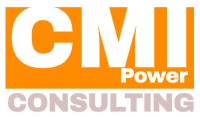PRODUCTION EFFICIENCY INCREASE
Helping organizations to achieve operational objectives
Customer needs
Business +100M euro yearly turnover
The company in question, operating within the automotive industry, is facing several critical challenges within its production domain. These challenges encompass a range of issues including deficiencies in workplace standardization in the production area, ergonomic issues, low productivity among operators, discipline problems, overcrowded and insufficient production space, and high work in progress inventory. The organization is in the very early stages of developing a lean culture
Implementation
Based on the initial CMI assessment, the proposal was to implement the 5S method with priority in the production area. This will involve organizing several 5S workshops and training sessions for personnel in pilot areas, followed by the extension of these best practices to all areas of the organization.
The implementation phases of the project were as follows:
- Preparation Phase: This phase involved planning and preparing for the implementation of the 5S methodology. Activities included conducting initial assessments, defining project goals and objectives, establishing implementation timelines, and assembling the project team.
- Training Phase: During this phase, personnel were trained on the principles and techniques of the 5S methodology. Training sessions covered topics such as sorting, setting in order, shining, standardizing, and sustaining. The goal was to ensure that all team members understood their roles and responsibilities in the implementation process.
- Pilot Implementation Phase: In this phase, pilot 5S workshops and implementation sprints were conducted in selected areas of the production zone. These pilot initiatives served as test cases to identify challenges, refine processes, and demonstrate the effectiveness of the 5S methodology in improving workplace organization and efficiency.
- Evaluation Phase: Following the pilot implementations, a comprehensive evaluation was conducted to assess the outcomes and impact of the 5S initiatives. This evaluation included gathering feedback from participants, analyzing key performance metrics, and identifying areas for improvement.
- Expansion Phase: Based on the results of the pilot phase and evaluation findings, the 5S methodology was expanded to encompass the entire production area. This involved scaling up implementation efforts, conducting additional training sessions as needed, and ensuring ongoing support and guidance for personnel.
- Sustainment Phase: The final phase focused on sustaining the gains achieved through the implementation of the 5S methodology. This involved establishing systems and processes to ensure ongoing adherence to 5S principles, monitoring performance metrics, providing continuous training and reinforcement, and fostering a culture of continuous improvement.
By following these implementation phases, the organization aimed to effectively introduce and institutionalize the 5S methodology, leading to improved workplace organization, efficiency, and overall operational performance.
Outcomes
The main benefits achived based on the improvement program proposed by CMI have been:
- Reduce the searching time for tools, raw materials, auxiliary materials, and equipment by 30% compared to the initial state.
- Productivity increase with 23%.
- Reduce the work in progress inventory with 60%
- Gain a production space reduction with 21%
